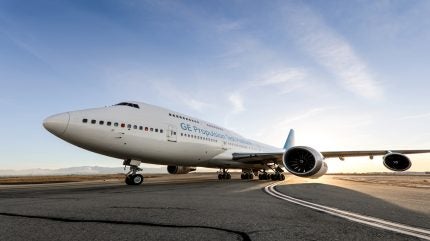
GE Aerospace and NASA have partnered on a series of flight tests aimed at enhancing the aviation industry’s understanding of contrails and their effects on the climate.
The tests will deploy advanced methods and technologies to study the ice particle clouds that can form when airplanes fly through cold, humid air. These contrails are believed to contribute to global warming.
The Contrail Optical Depth Experiment (CODEX) will take place in Virginia.
NASA Langley Research Center’s G-III aircraft will utilise light detection and ranging (LiDAR) technology to follow GE Aerospace’s Flying Test Bed and scan its wake.
This is expected to improve the three-dimensional imaging of contrails, providing insights into their formation and behaviour.
The collaboration is part of GE Aerospace’s efforts to refine its 747 Flying Test Bed’s operations, preparing for future tests of new commercial engine technologies.
How well do you really know your competitors?
Access the most comprehensive Company Profiles on the market, powered by GlobalData. Save hours of research. Gain competitive edge.

Thank you!
Your download email will arrive shortly
Not ready to buy yet? Download a free sample
We are confident about the unique quality of our Company Profiles. However, we want you to make the most beneficial decision for your business, so we offer a free sample that you can download by submitting the below form
By GlobalDataThese tests are crucial for the development of propulsion systems like Open Fan and advanced combustion designs that are being developed under CFM International’s Revolutionary Innovation for Sustainable Engines (RISE) programme.
The CFM RISE programme, launched in 2021, has already completed over 250 tests, showcasing advancements in technologies such as Open Fan and hybrid electric systems compatible with sustainable aviation fuel (SAF).
GE Aerospace future of flight technology general manager Arjan Hegeman said: “Understanding how contrails act in-flight with the latest detection technology is how we move innovation forward.
“These tests will provide critical insight to advance next generation aircraft engine technologies for a step change in efficiency and emissions.”
NASA, the German Aerospace Center (DLR), and SATAVIA are working together to forecast atmospheric conditions conducive to contrail studies.
DLR’s predictions will guide aircraft into regions where contrails are likely to form, with the post-flight test data helping to refine contrail models.
SATAVIA, now part of GE Aerospace’s Aerospace Carbon Solutions, will use the findings to enhance its contrail forecasting and management service.
NASA’s Sustainable Flight National Partnership manager Dr Rich Wahls said: “NASA is advancing the scientific understanding of contrails to improve our confidence in future operational contrail management decisions that consider overall climate impact and economic trades.”


